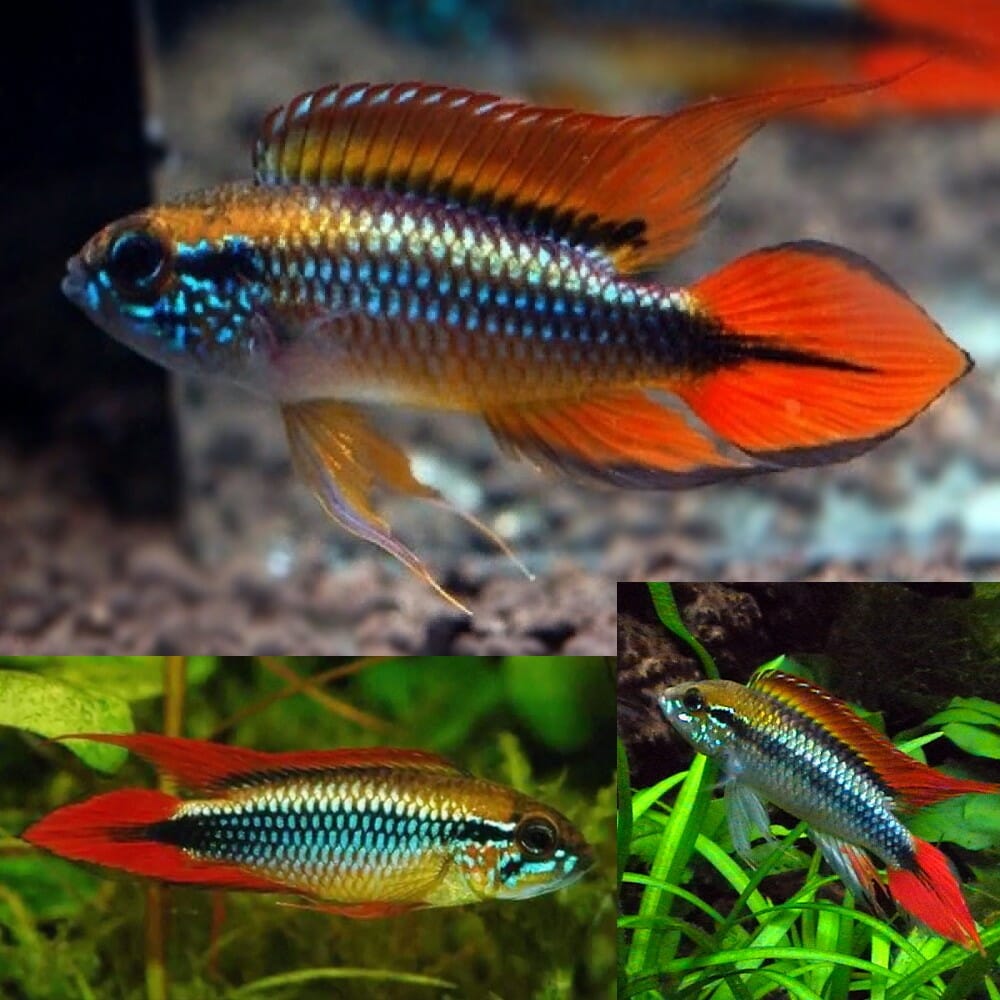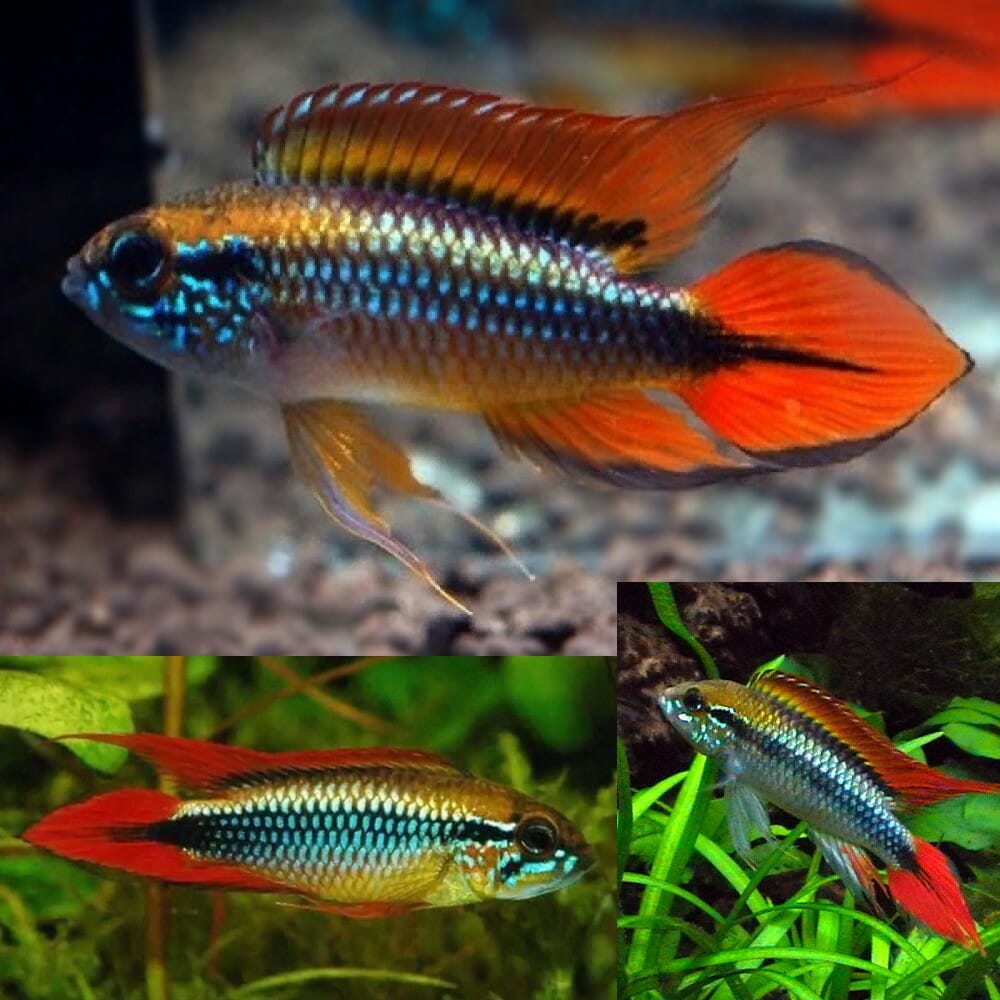Apistogramma - Agassizii Double Red PAIR
Apistogramma - Agassizii Double Red PAIR
Couldn't load pickup availability
*Actual stock may vary from picture, and sexual maturity. Picture is of mature individual
Classification:
Order: Perciformes
Family: Cichlidae
Distribution:
The lectotype originates from Lake Manacapuru in Amazonas state, northwestern Brazil, just upstream from the city of Manaus and fed by the main Amazon river channel.
Habitat:
Tends to inhabit slower-moving tributaries, backwaters and creeks in areas where fallen leaf litter collects and these may contain black, white or clear water depending on locality or in some cases, time of year.
Maximum Standard Length:
Male: 7.5 cm
Female: 5 cm
Aquarium Size:
Base dimensions of 60 x 30cm or more are acceptable for a single pair with a group requiring larger quarters.It is advised to find a filter which has a water flow between 4-5 times the volume of your aquarium.
Maintenance:
Provided adequate cover and structure is available this species is unfussy with regards to décor with ceramic flowerpots, lengths of plastic piping and other artificial materials all useful additions. A more natural-looking arrangement might consist of a soft, sandy substrate with wood roots and branches placed such a way that plenty of shady spots and caves are formed.
The addition of dried leaf litter (beech, oak or Ketapang almond leaves are all suitable) would further emphasise the natural feel and with it bring the growth of beneficial microbe colonies as decomposition occurs. These can provide a valuable secondary food source for fry, whilst most populations will appreciate the tannins and other chemicals released by the decaying leaves. Leaves can be left in the tank to break down fully or removed and replaced every few weeks. If maintaining a blackwater population a net bag filled with aquarium-safe peat can also be added to the filter or suspended over the edge of the tank.
Fairly dim lighting is recommended and plant species from genera such as Microsorum, Taxiphyllum, Cryptocoryne and Anubias are arguably best since they will grow under such conditions. A few patches of floating vegetation to diffuse the light even further may also prove effective. Filtration, or at least water flow, should not be very strong and very large water changes are best avoided with 10-15% weekly adequate provided the tank is lightly-stocked.
Water Conditions:
Temperature: 22 – 29°C
pH: Commercially-produced fish are relatively unfussy but some wild populations may require a value as low as 3.0 – 4.0 in order to breed.
Hardness: 0 – 179 ppm, again somewhat dependant on origin, with wild fishes more likelt to require negligible to low values.
Diet:
Primarily carnivorous and apparently feeds mostly on benthic invertebrates in nature. In the aquarium live and frozen foods such as Artemia, Daphnia and chironomid larvae (bloodworm) should be offered regularly although most specimens will also learn to accept dried alternatives with pelleted products generally preferred to flake.Click on the following links to search for high quality live, frozen and dry food: Bloodworm, Artemia, Daphnia.
Behaviour and Compatibility:
Captive-raised fish are the recommended choice for the general community aquarium. Wild examples are best maintained alone or with small ‘dither’ fishes such as Nannostomus spp., and ideally should not be mixed with other Apistogramma.
Sexual Dimorphism:
Males are larger, more colourful and develop more extended fins than females.
Reproduction:
Substrate spawner which normally lays its eggs in crevices or cavities among the décor. The female is responsible for post-spawning care of eggs and fry. The female is responsible for post-spawning care of eggs and fry and in smaller aquaria the male may need to be removed as she may become hyper-aggressive.
Share

